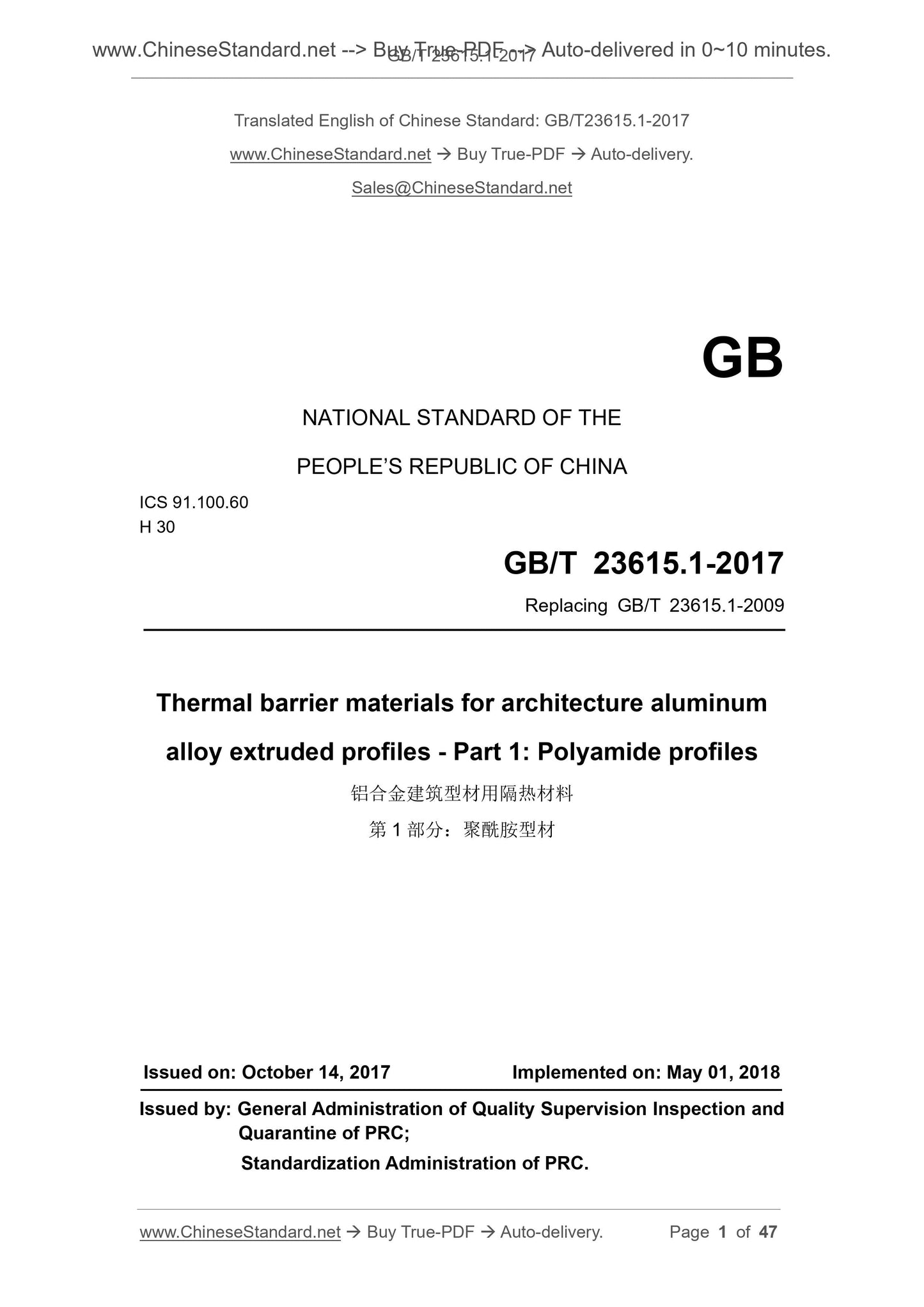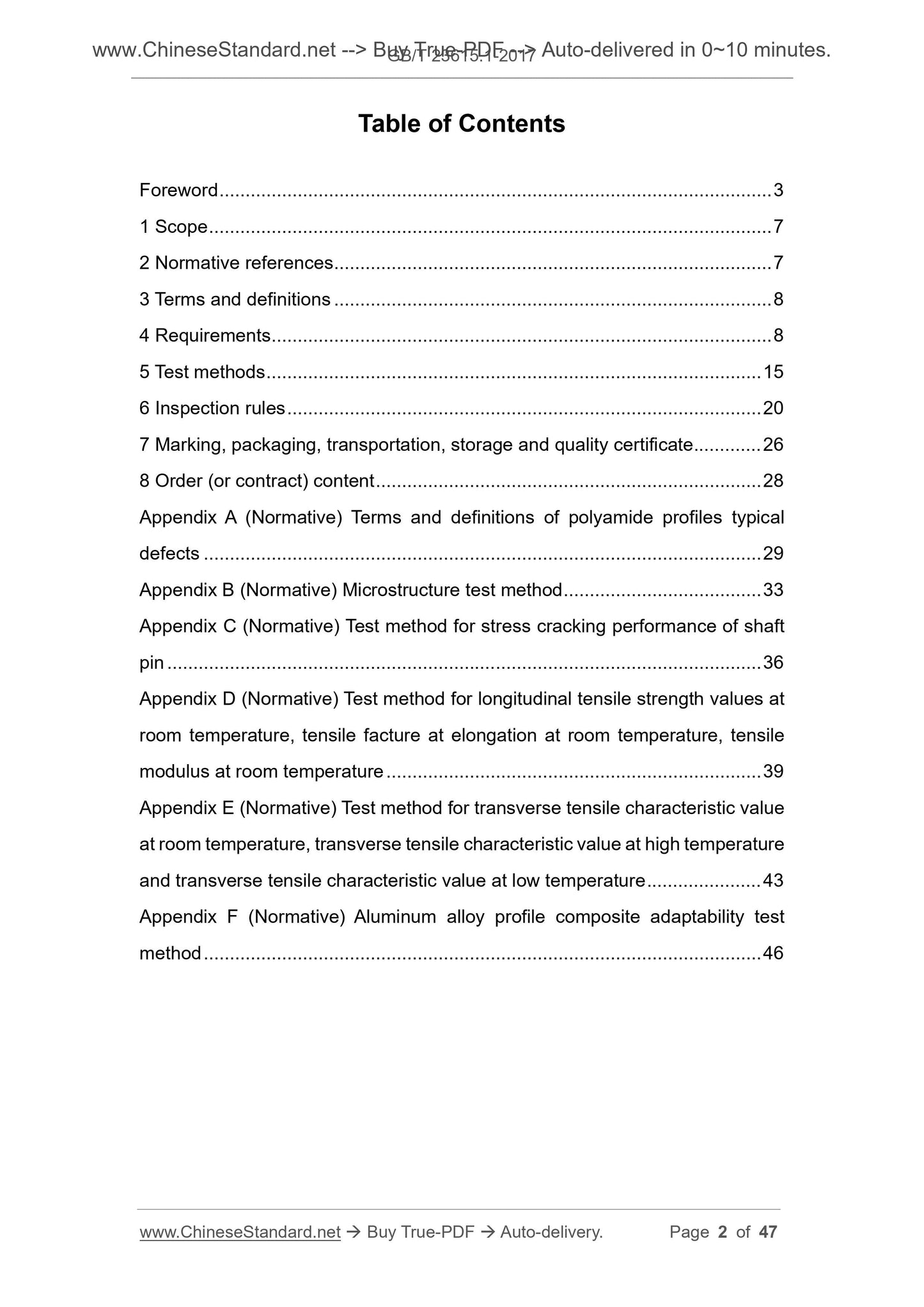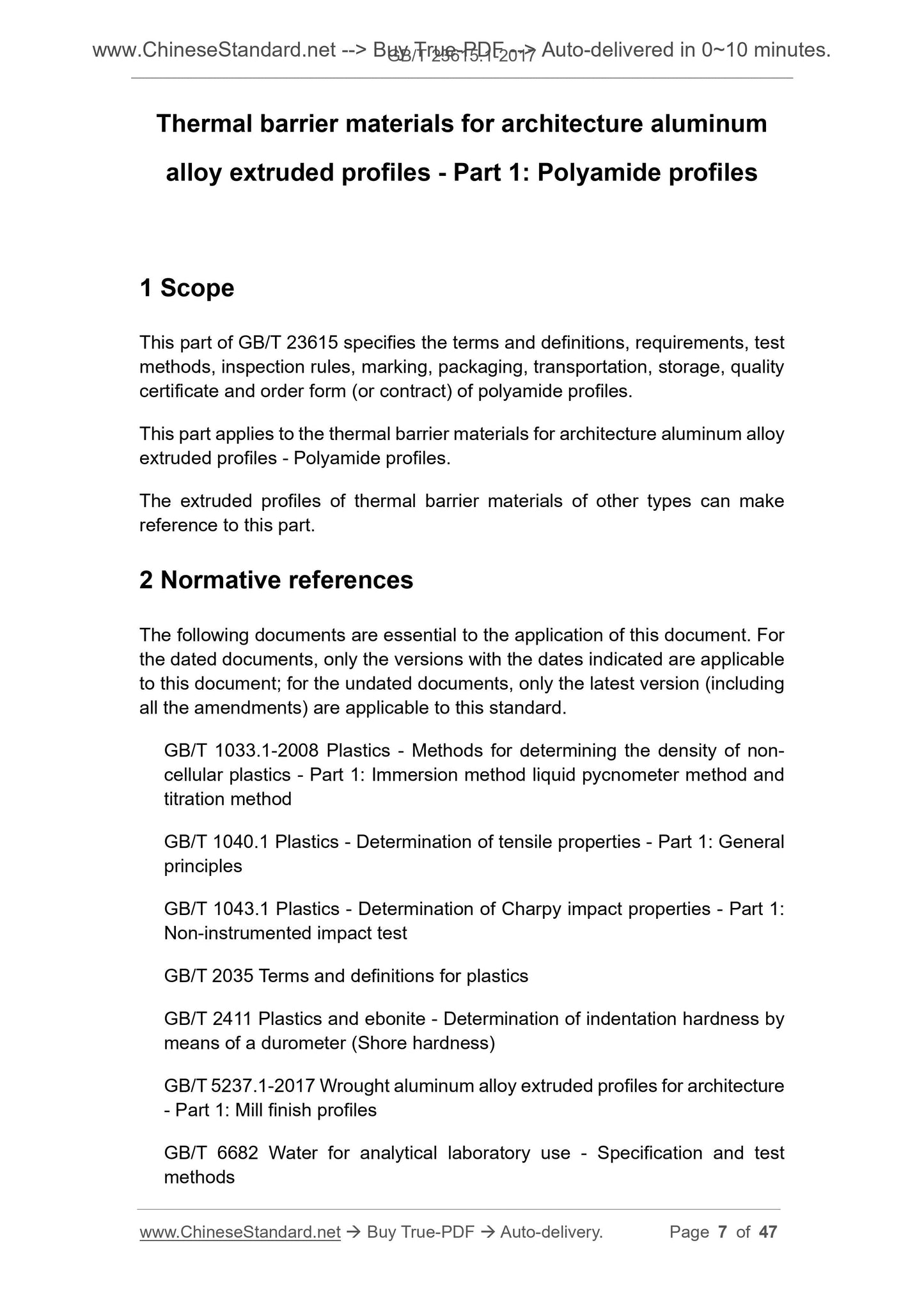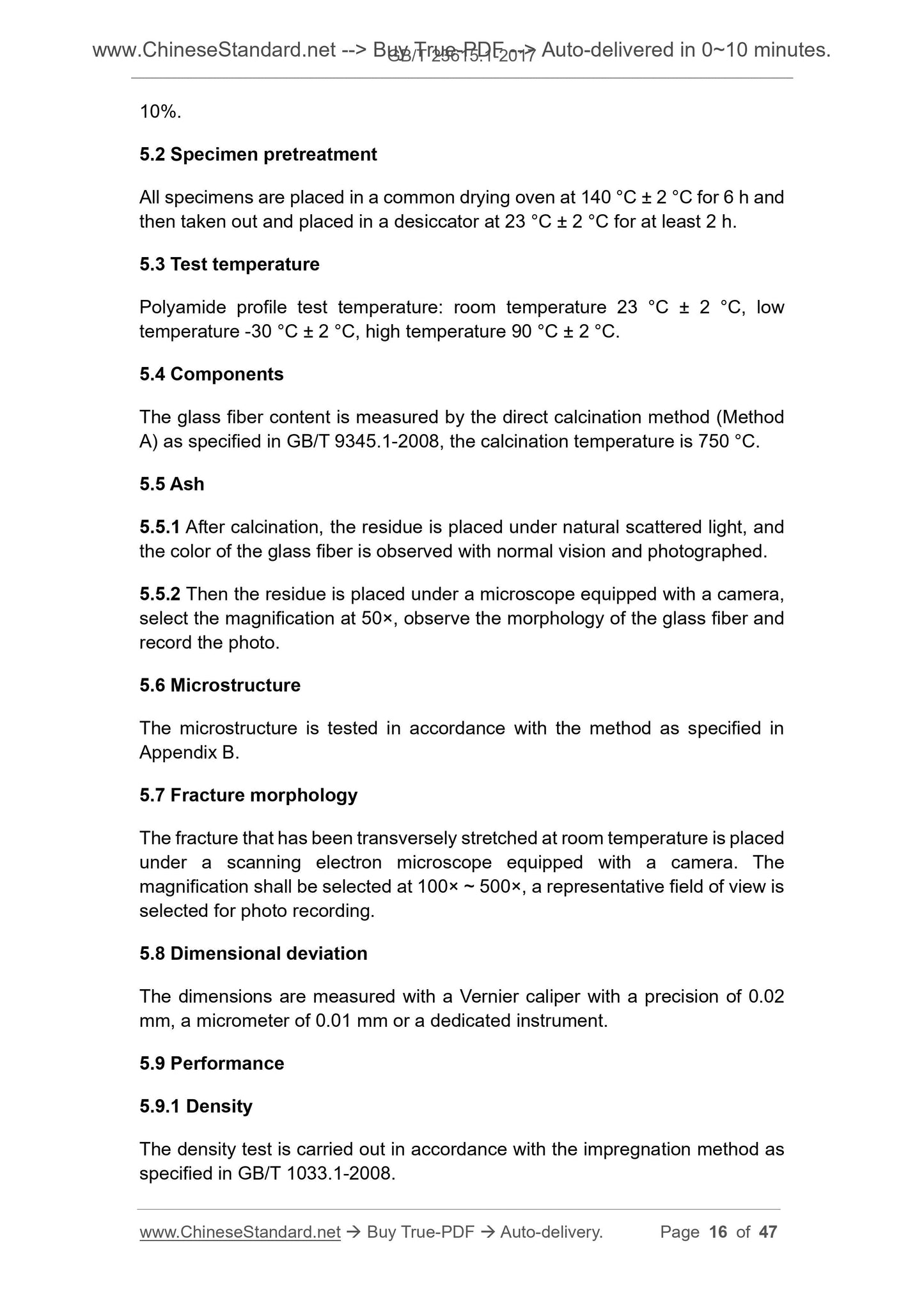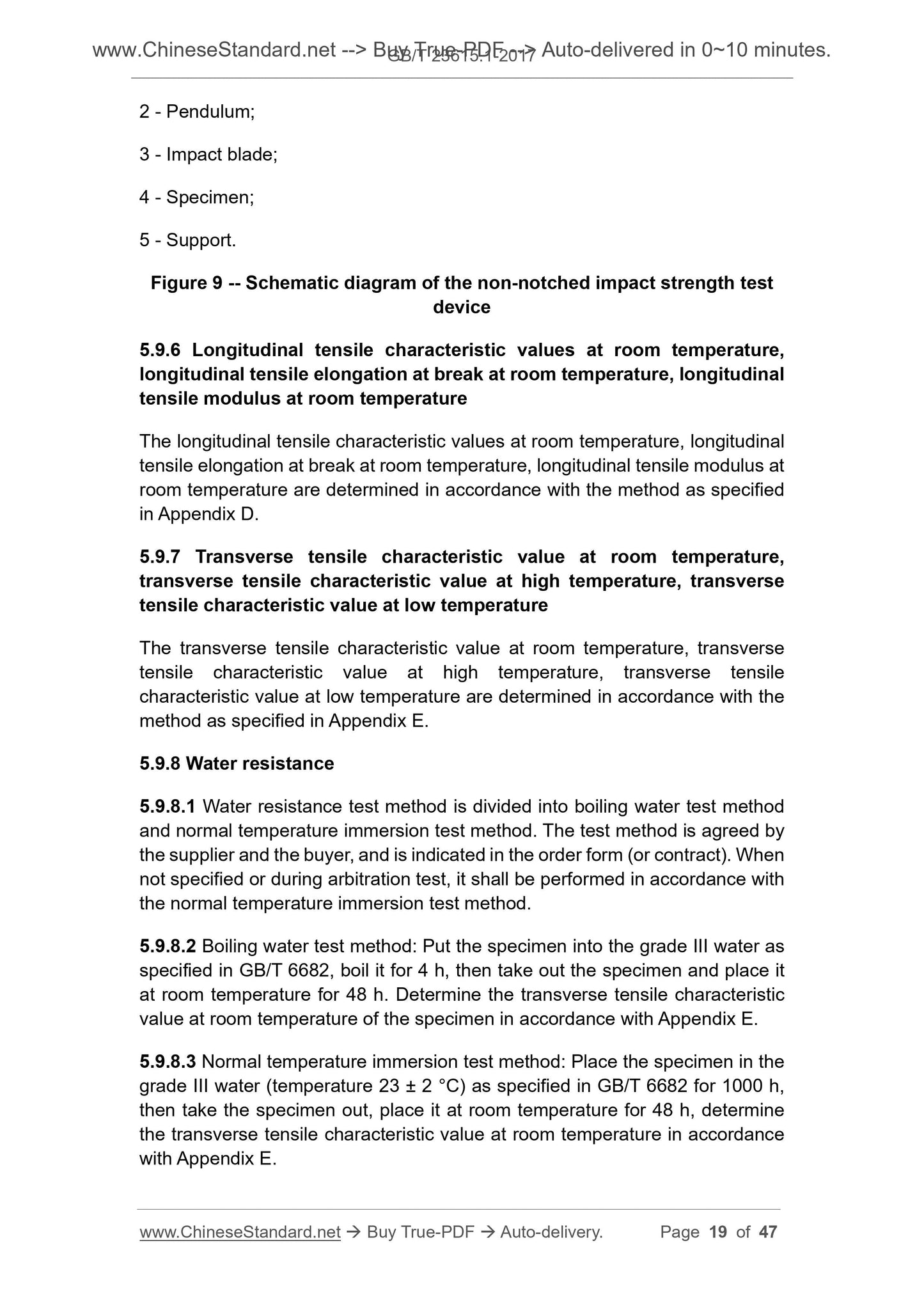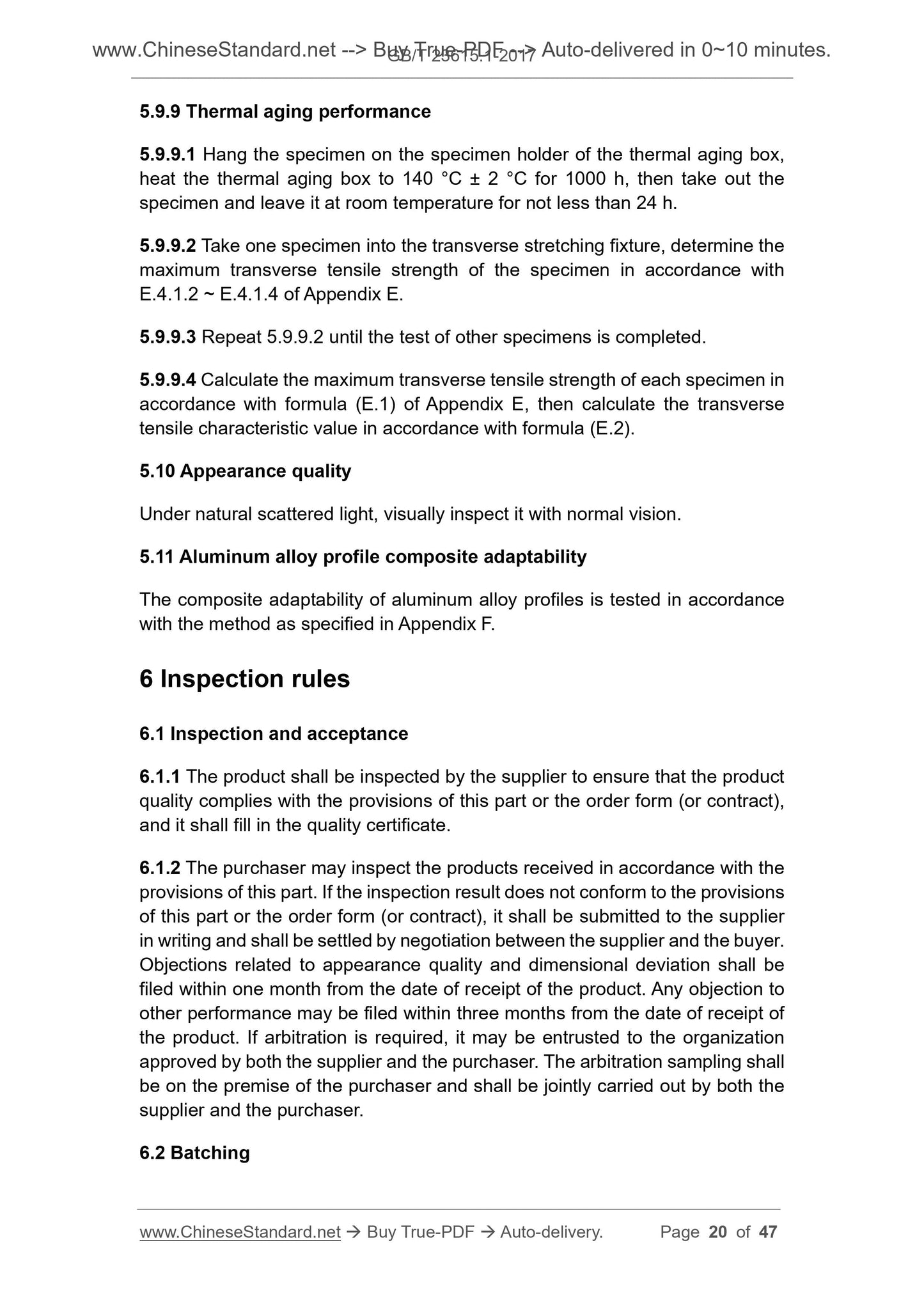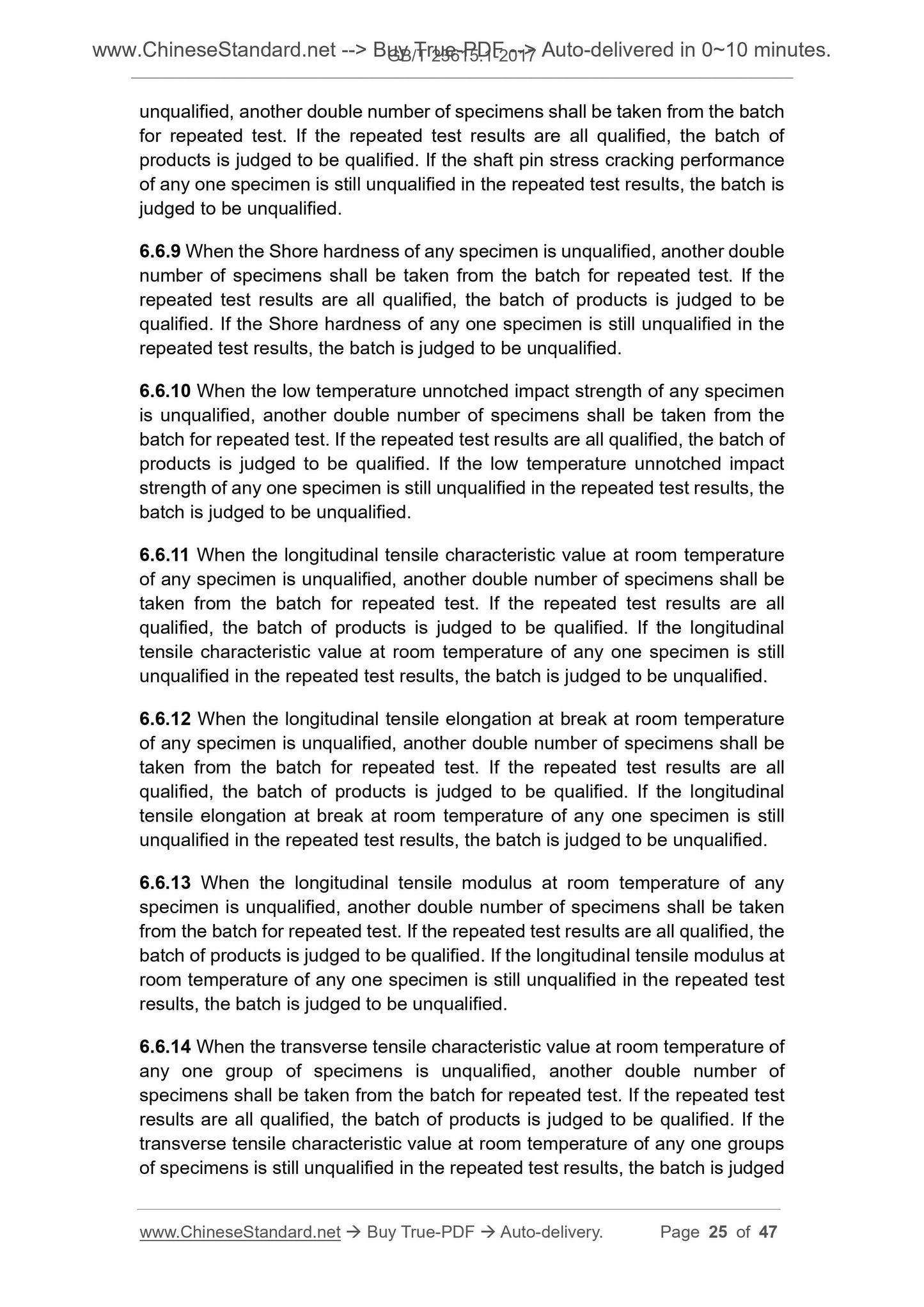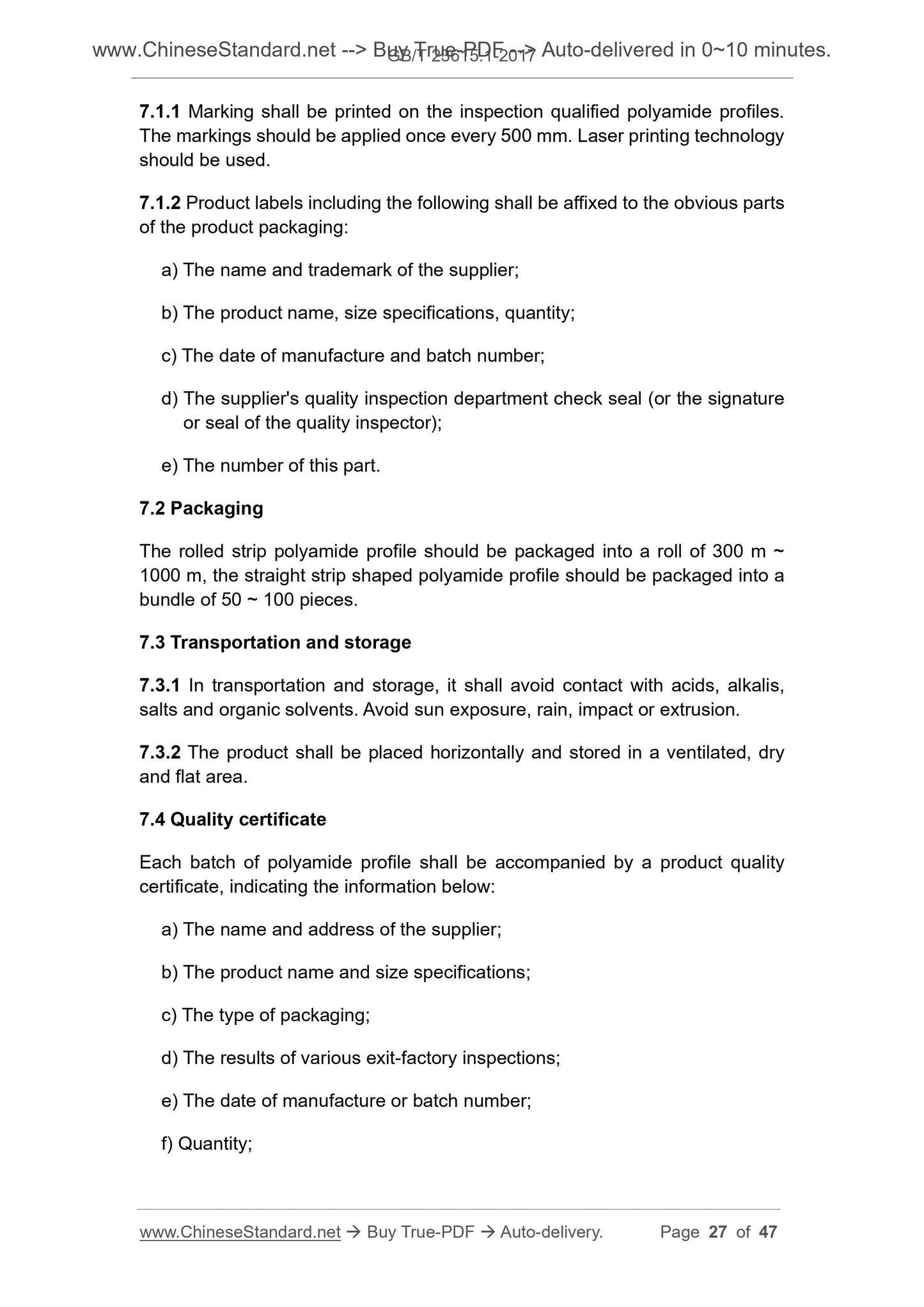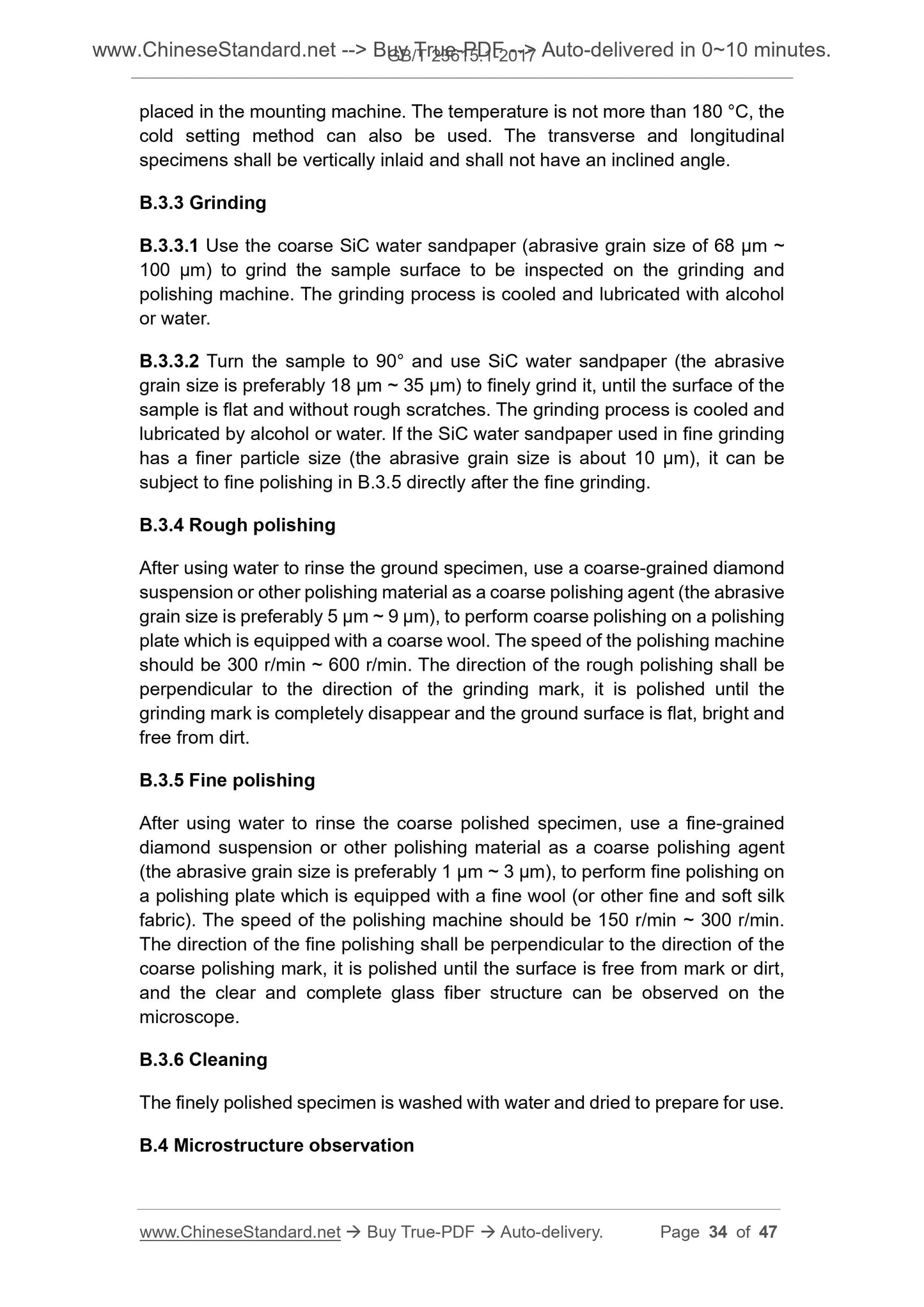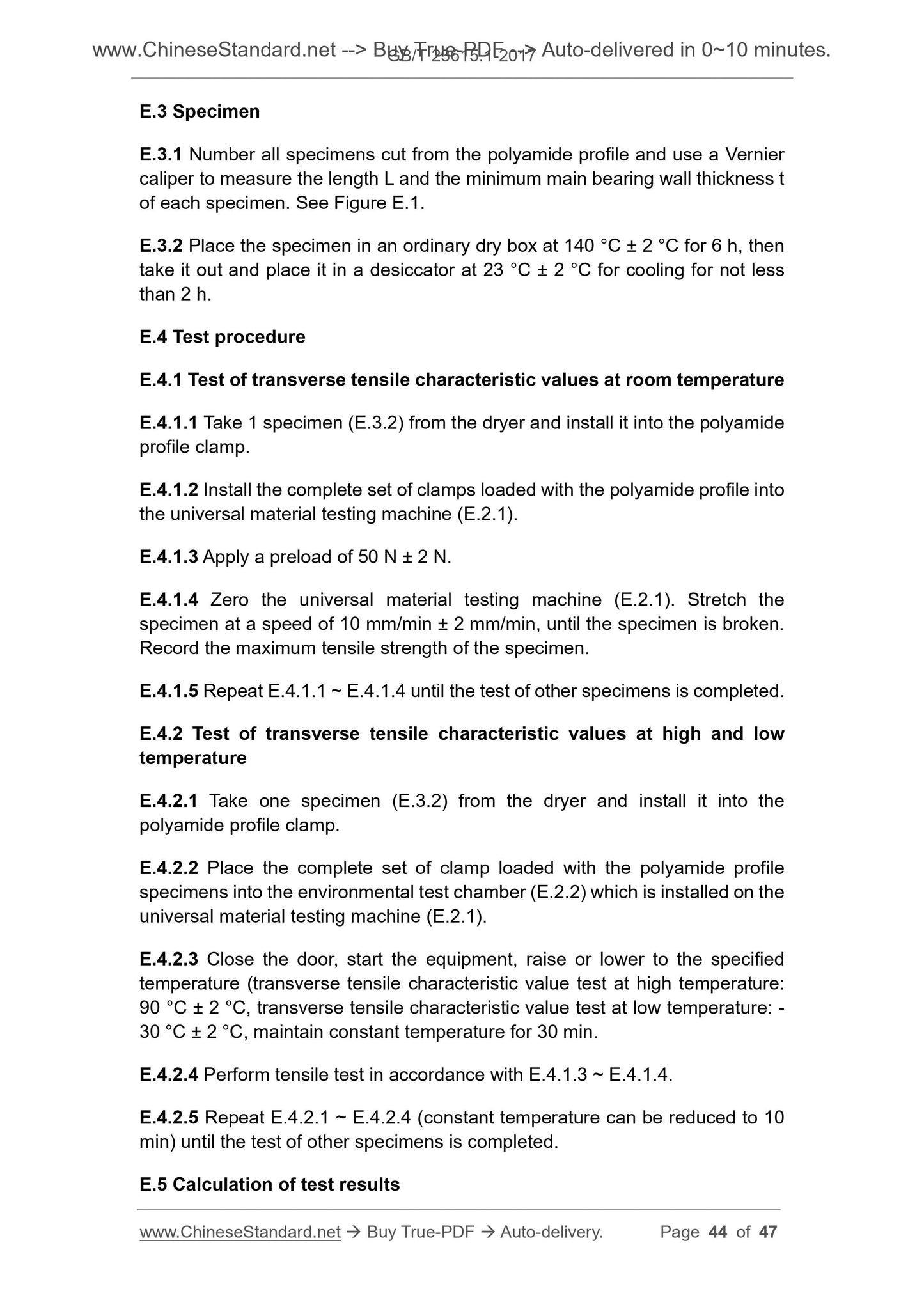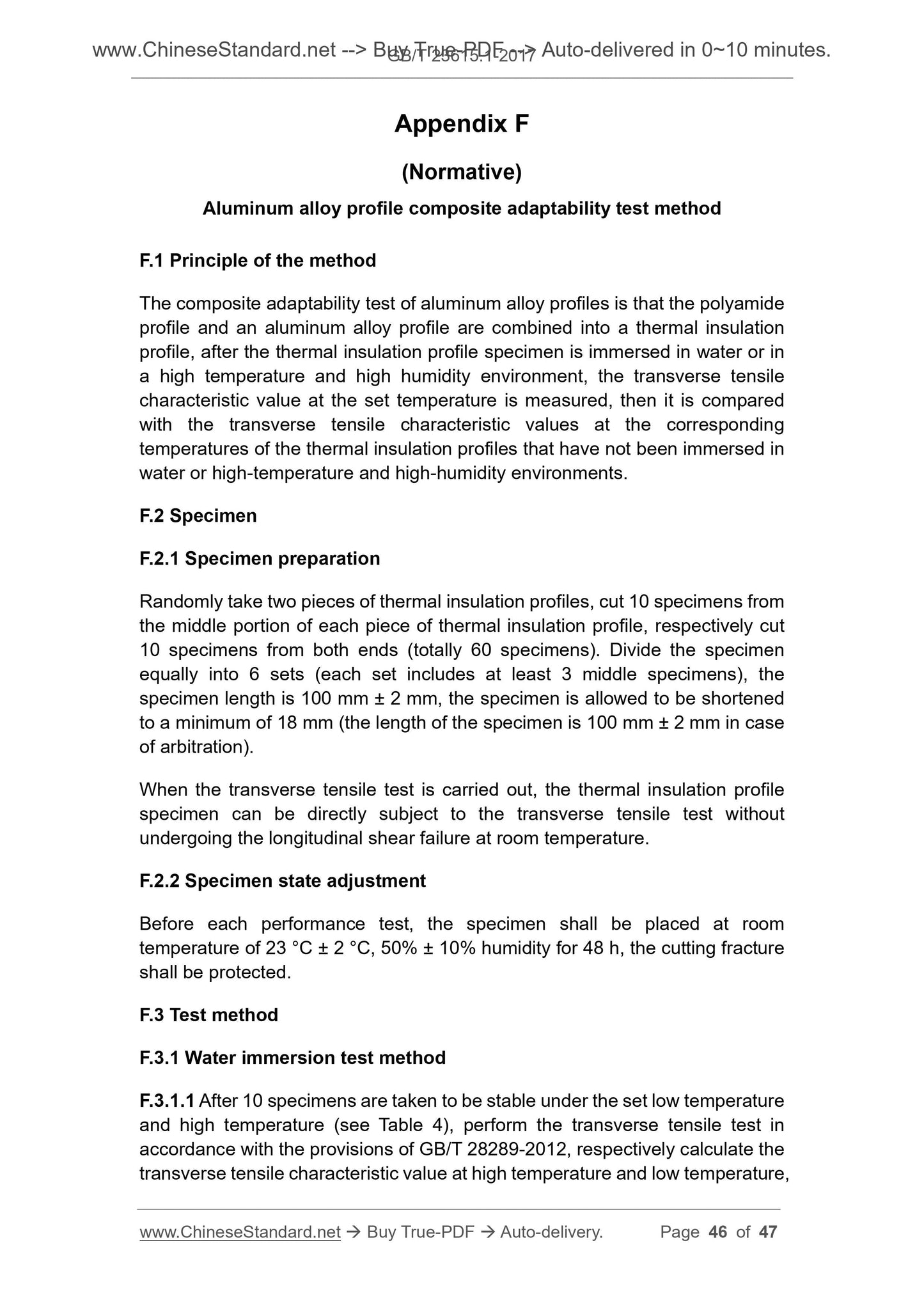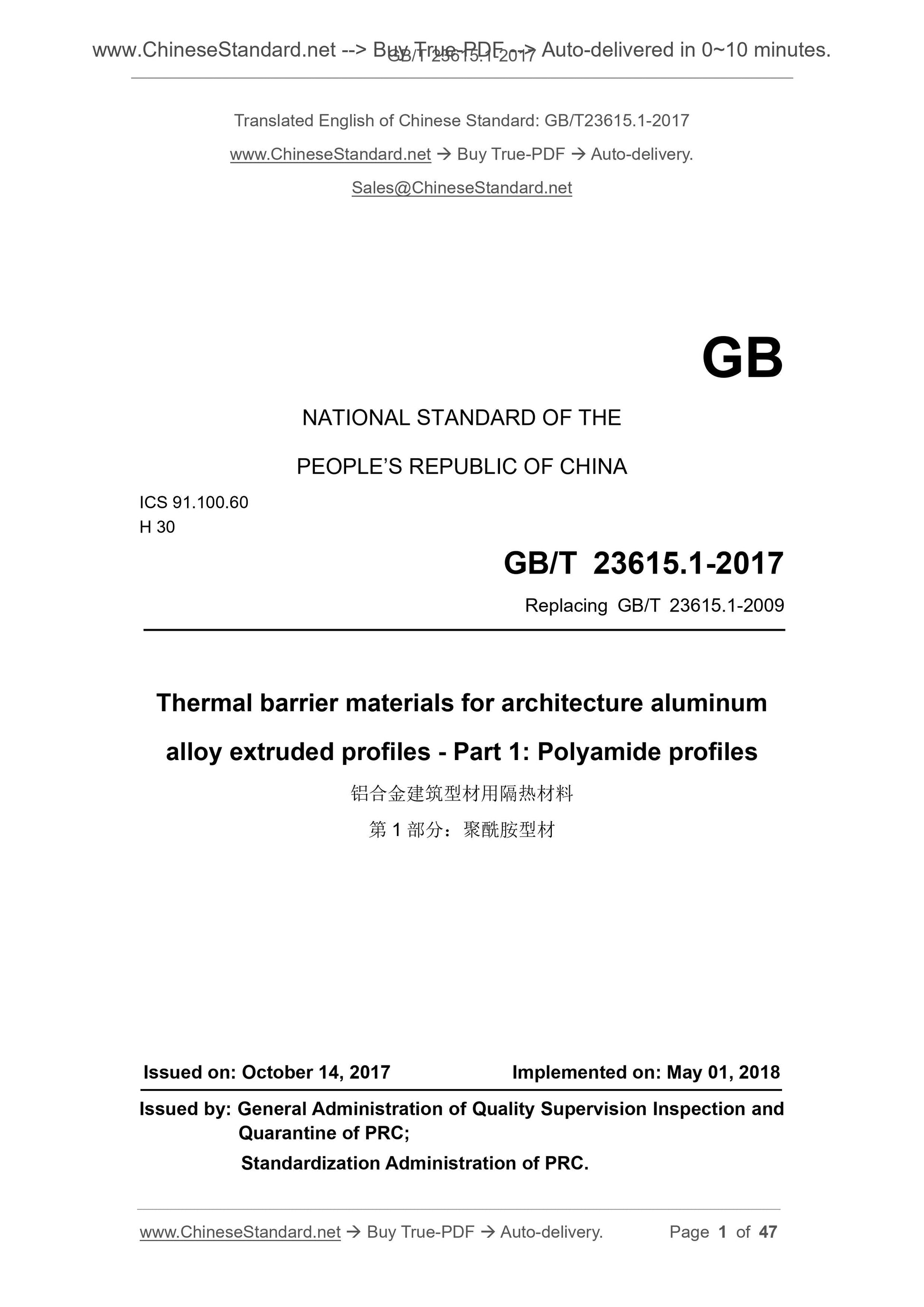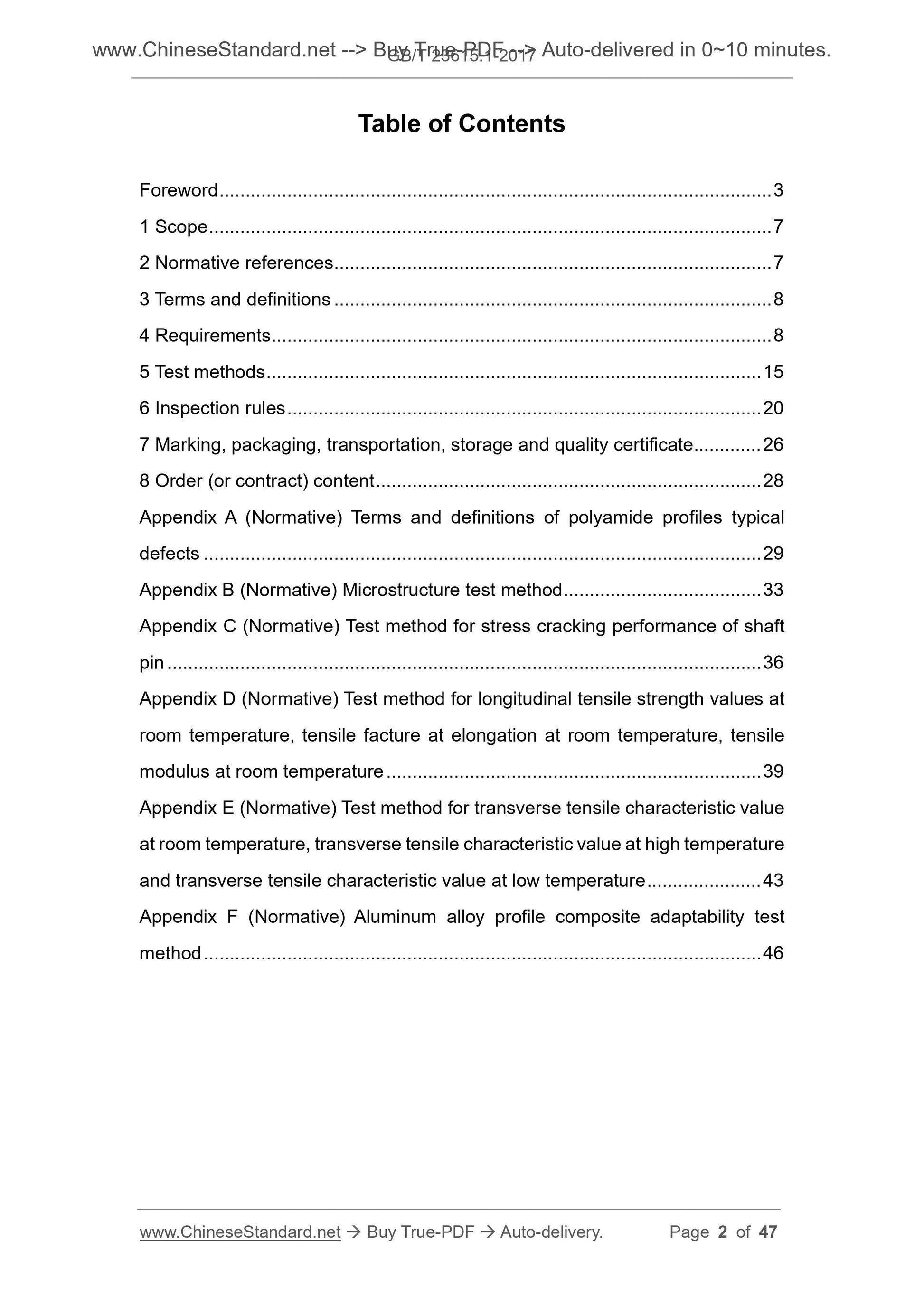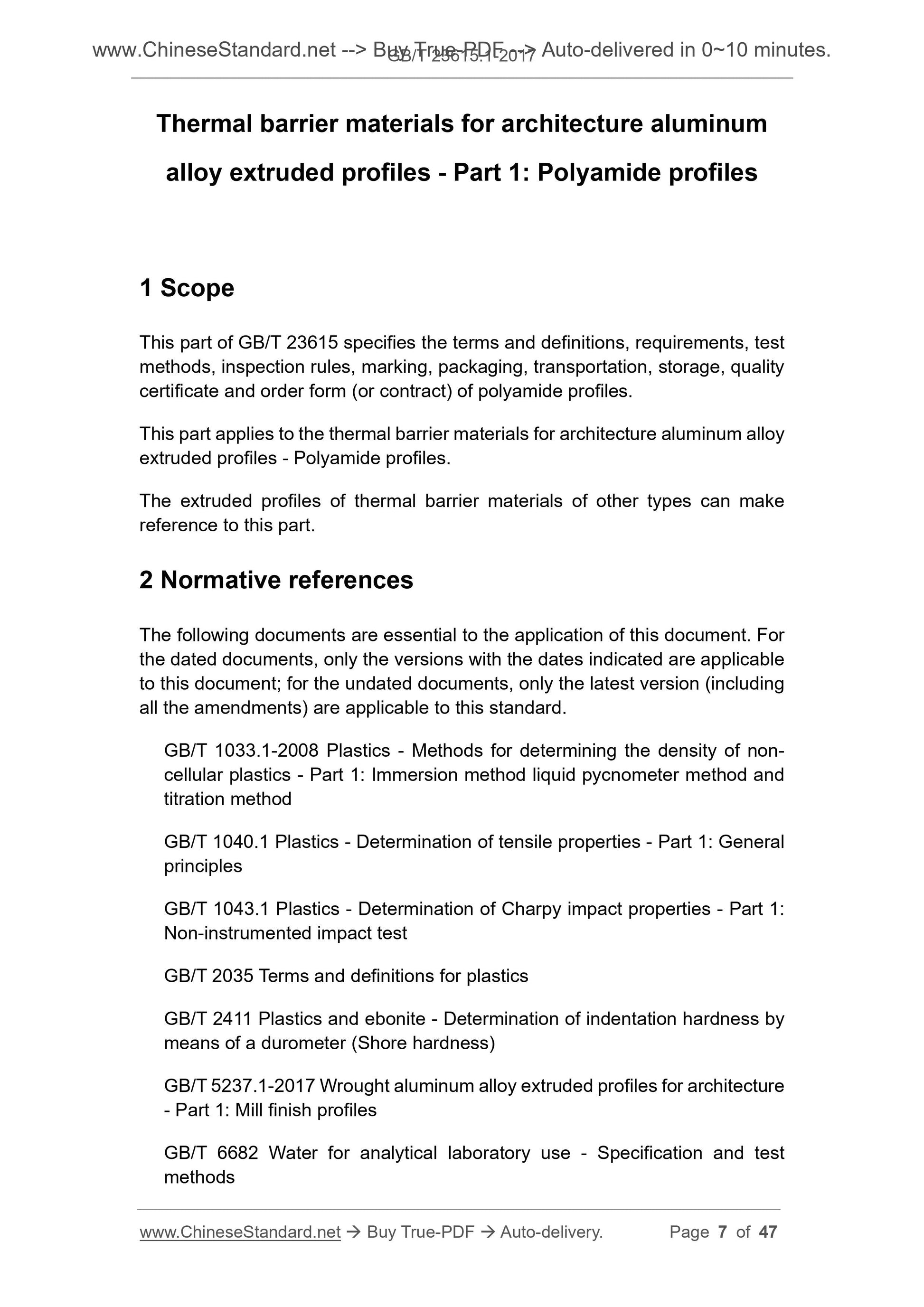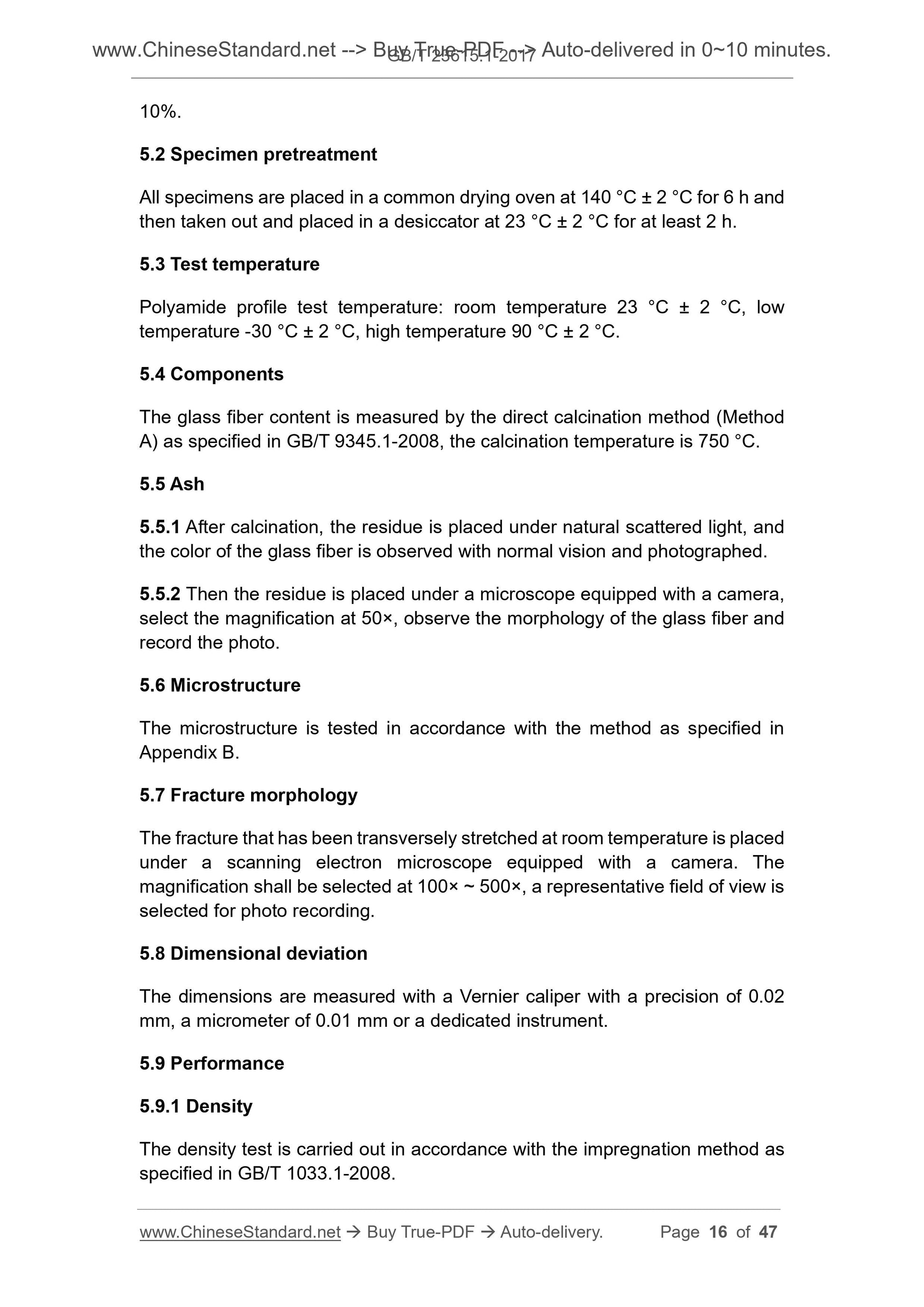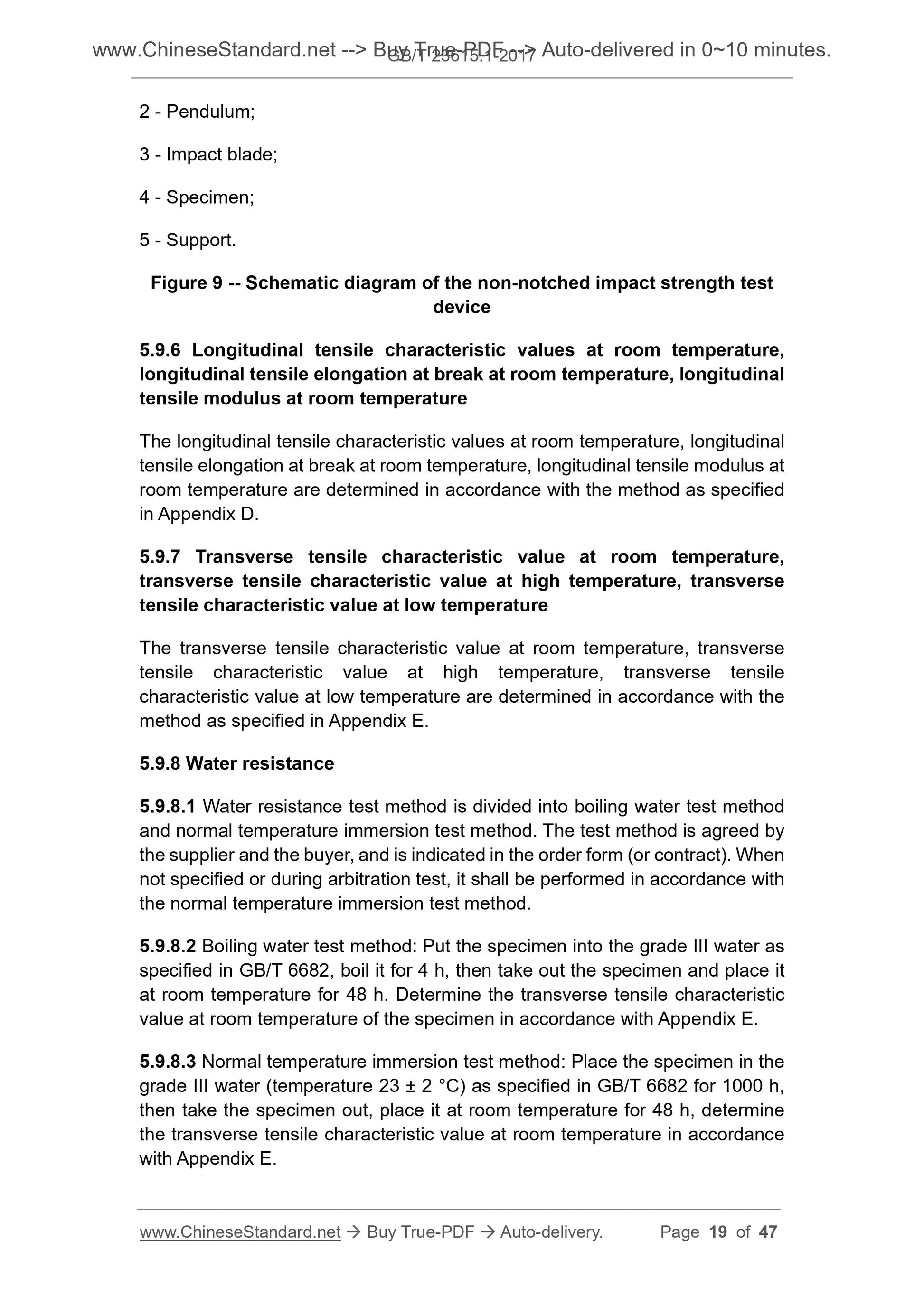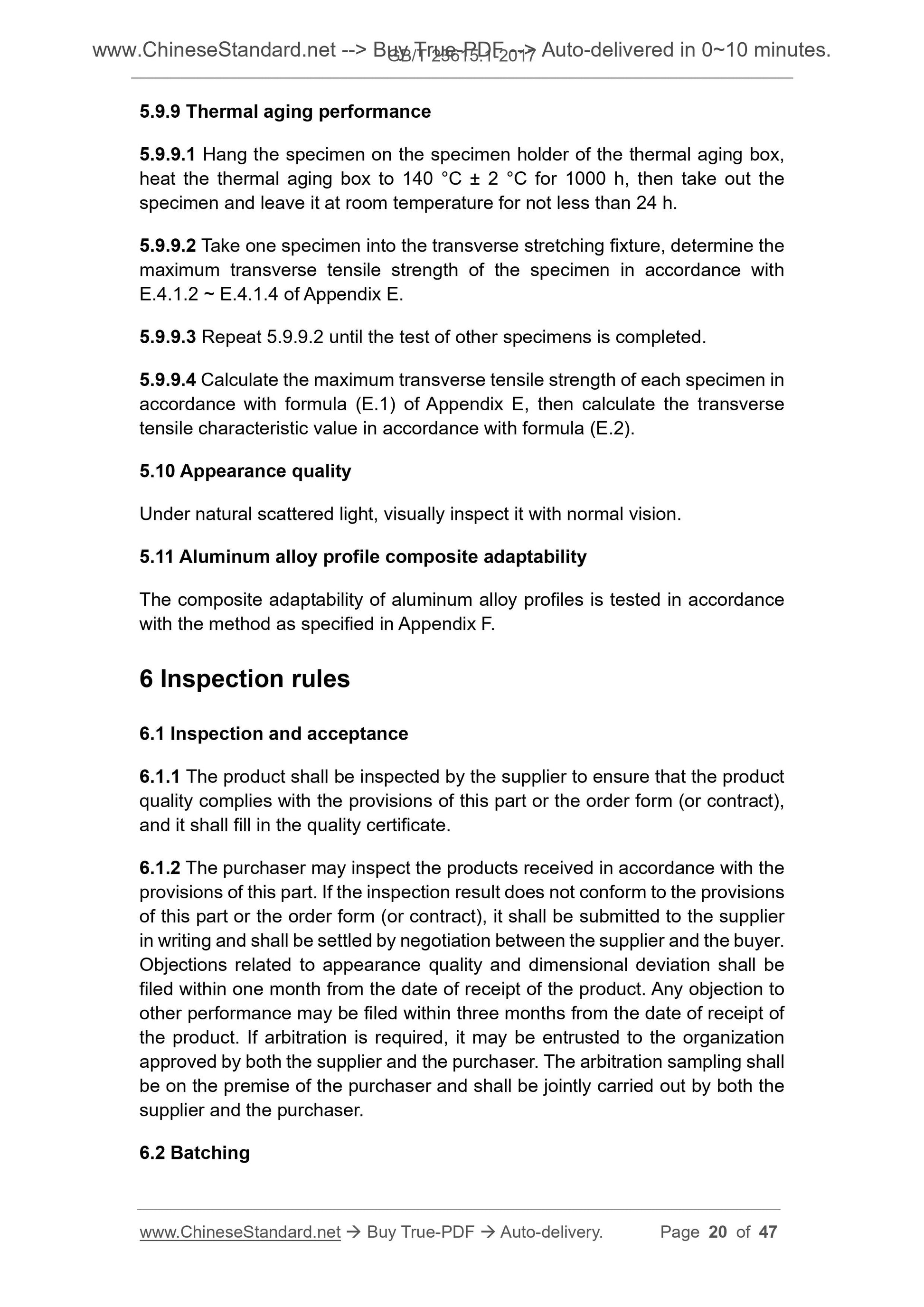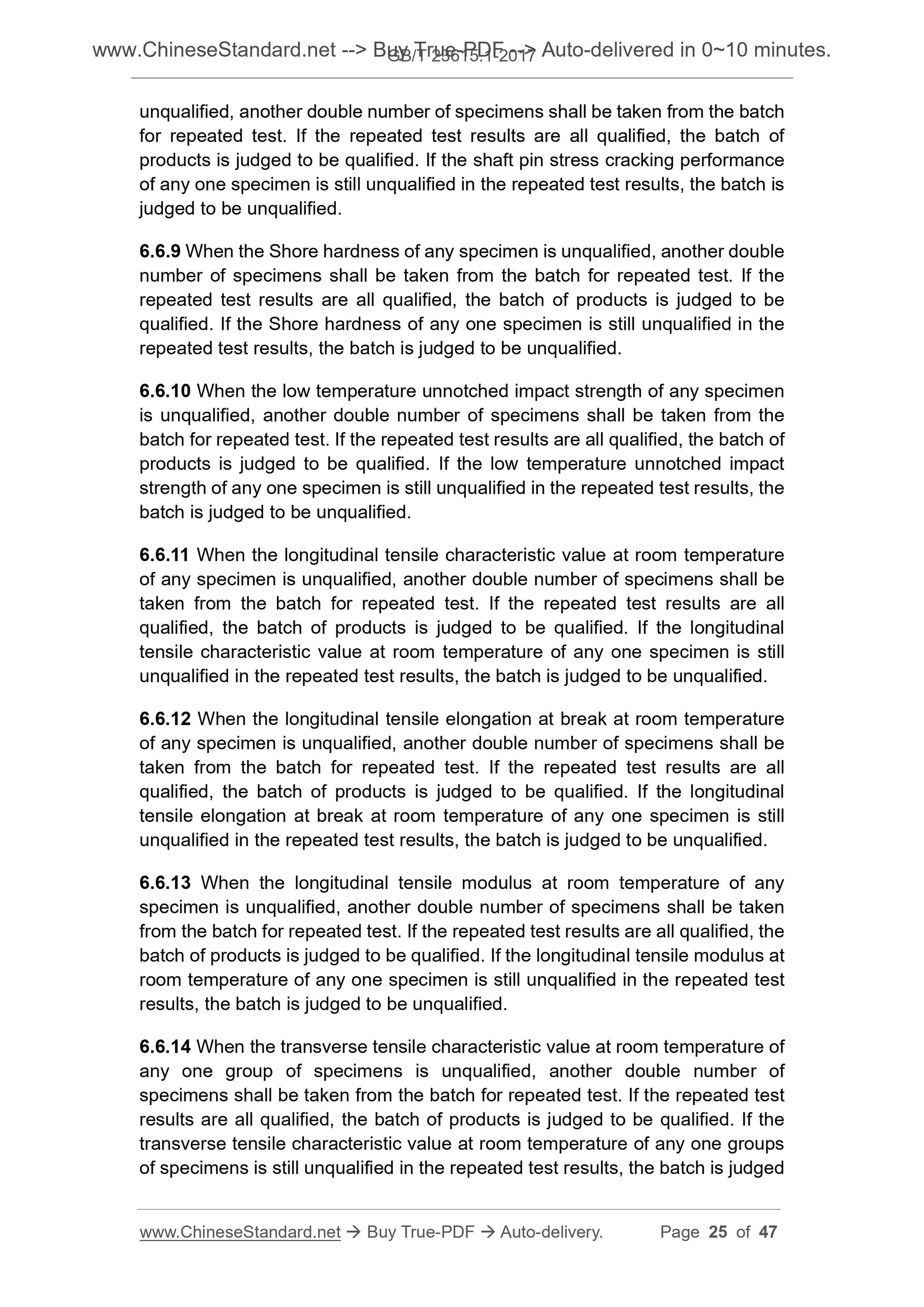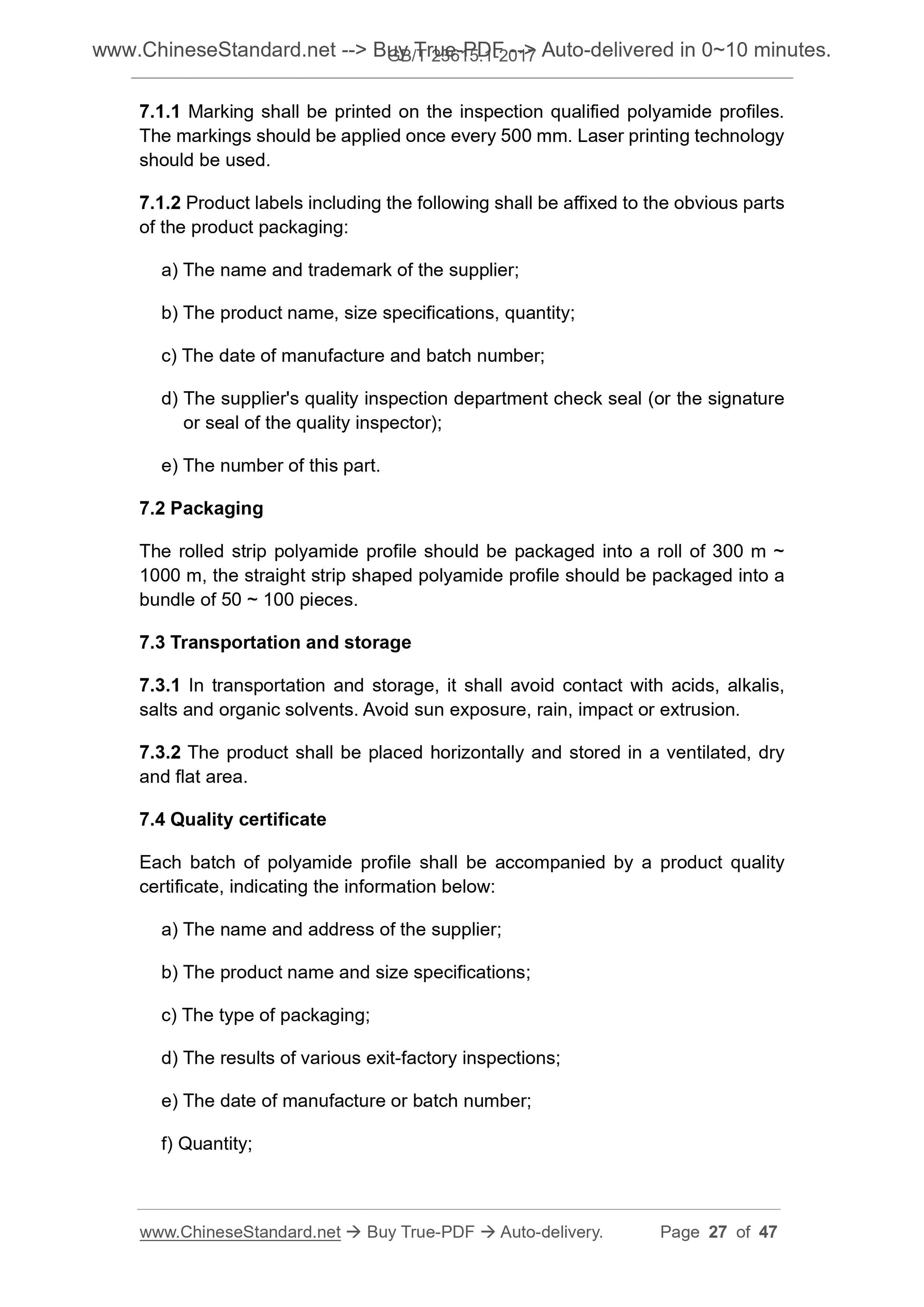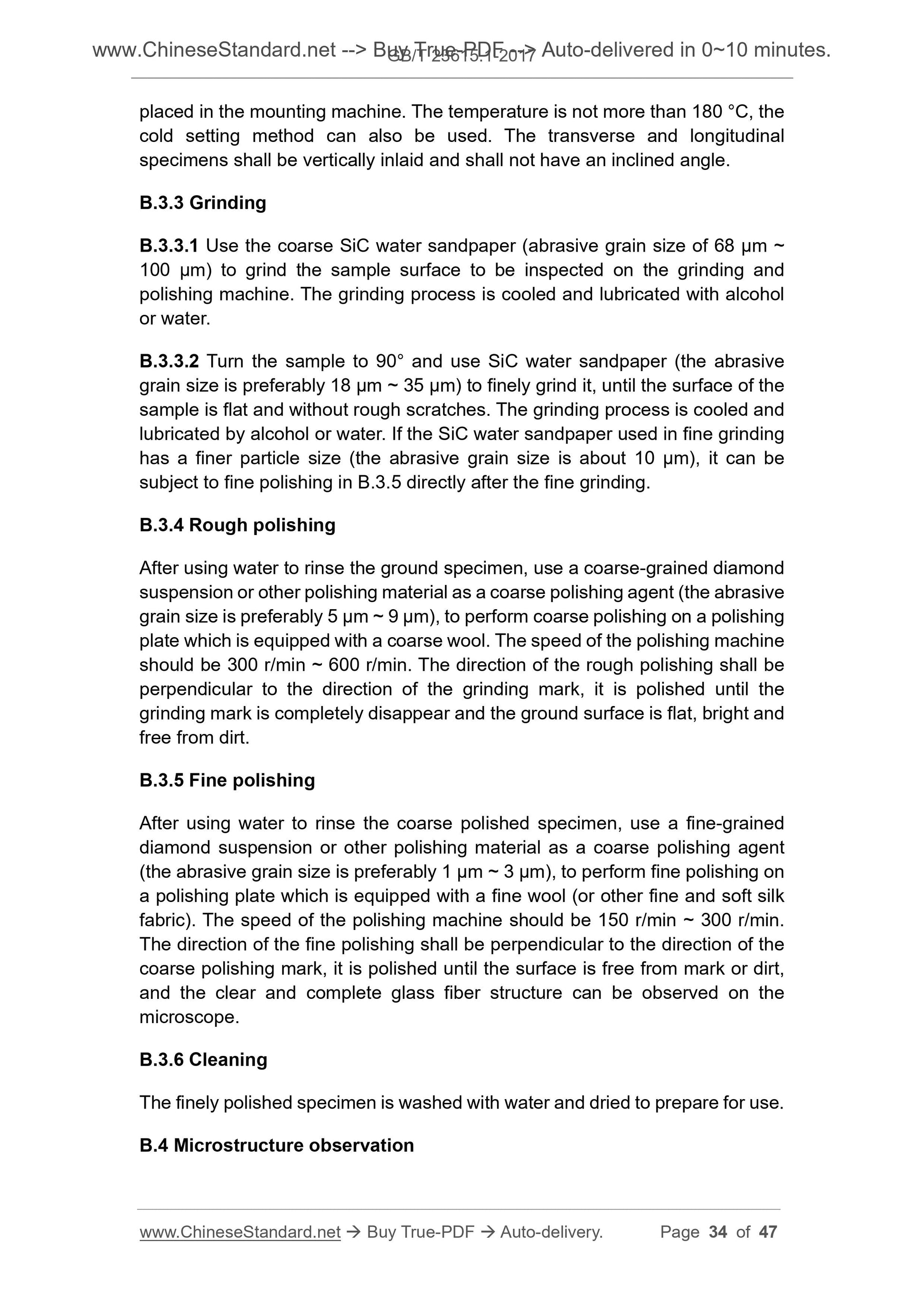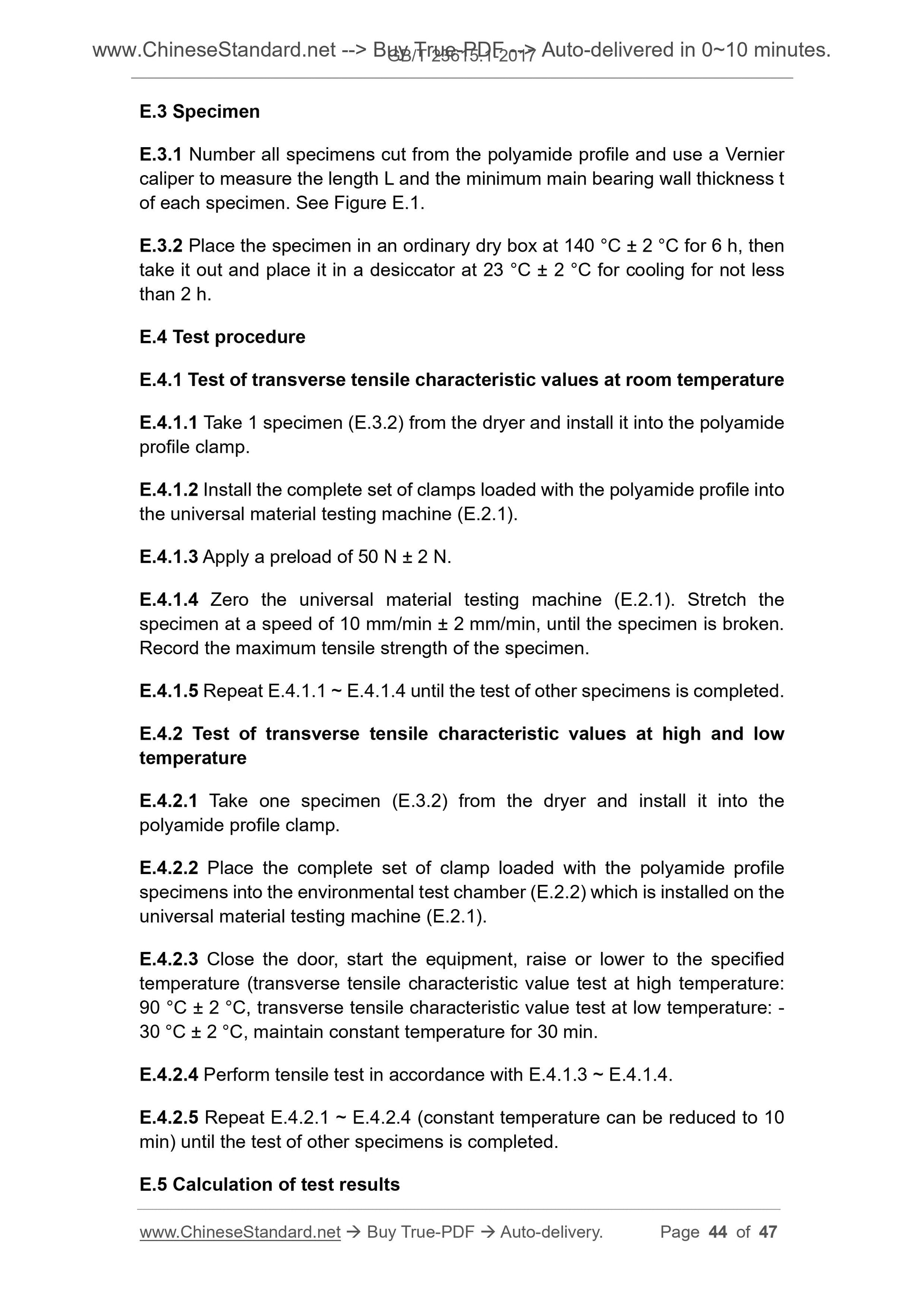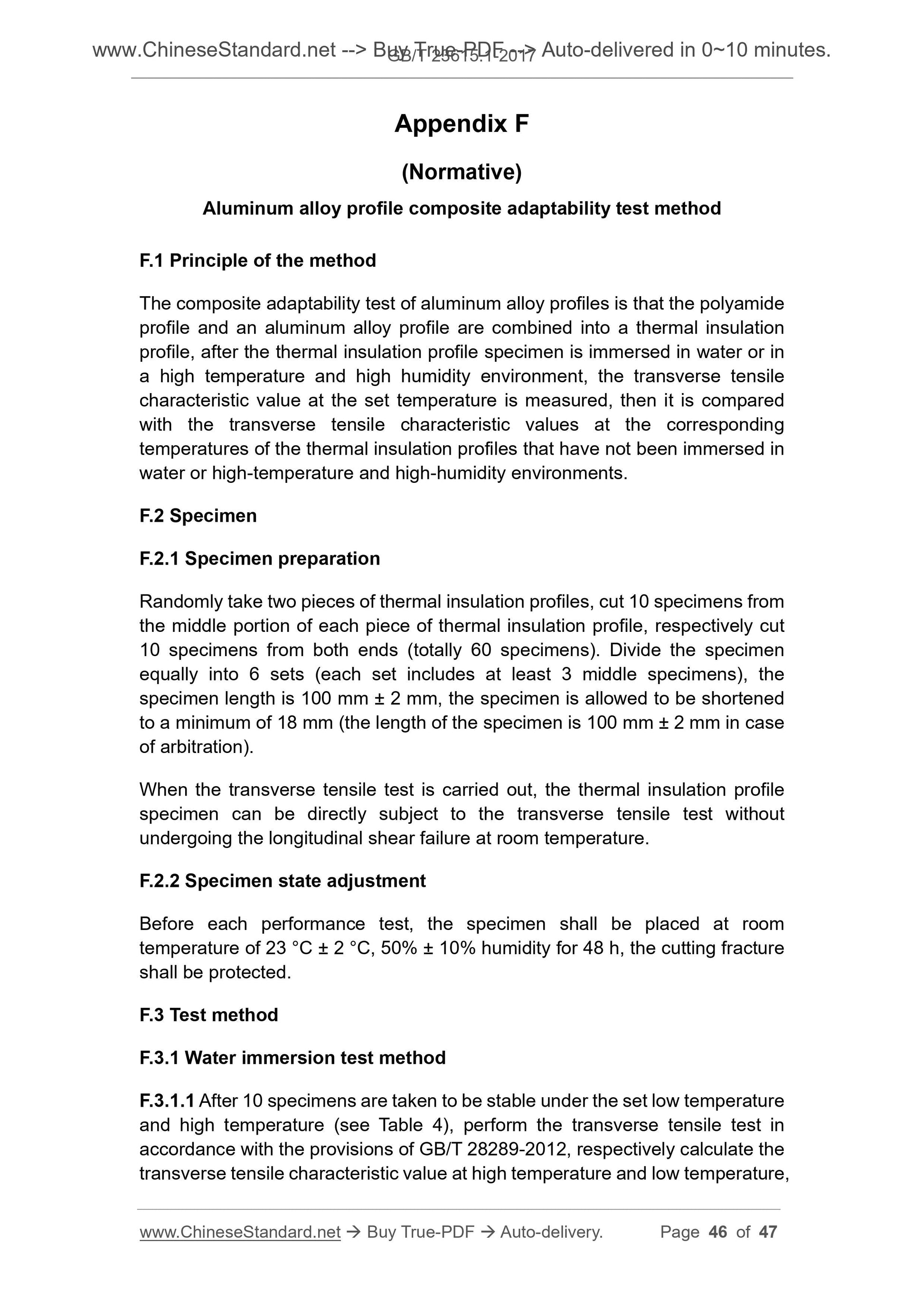1
/
of
11
www.ChineseStandard.us -- Field Test Asia Pte. Ltd.
GB/T 23615.1-2017 English PDF (GB/T23615.1-2017)
GB/T 23615.1-2017 English PDF (GB/T23615.1-2017)
Regular price
$145.00
Regular price
Sale price
$145.00
Unit price
/
per
Shipping calculated at checkout.
Couldn't load pickup availability
GB/T 23615.1-2017: Thermal barrier materials for architecture aluminum alloy extruded profiles - Part 1: Polyamide profiles
Delivery: 9 seconds. Download (and Email) true-PDF + Invoice.Get Quotation: Click GB/T 23615.1-2017 (Self-service in 1-minute)
Newer / historical versions: GB/T 23615.1-2017
Preview True-PDF
Scope
This part of GB/T 23615 specifies the terms and definitions, requirements, testmethods, inspection rules, marking, packaging, transportation, storage, quality
certificate and order form (or contract) of polyamide profiles.
This part applies to the thermal barrier materials for architecture aluminum alloy
extruded profiles - Polyamide profiles.
The extruded profiles of thermal barrier materials of other types can make
reference to this part.
Basic Data
| Standard ID | GB/T 23615.1-2017 (GB/T23615.1-2017) |
| Description (Translated English) | Thermal barrier materials for architecture aluminum alloy extruded profiles - Part 1: Polyamide profiles |
| Sector / Industry | National Standard (Recommended) |
| Classification of Chinese Standard | H30 |
| Classification of International Standard | 91.100.60 |
| Word Count Estimation | 34,392 |
| Date of Issue | 2017-10-14 |
| Date of Implementation | 2018-05-01 |
| Issuing agency(ies) | General Administration of Quality Supervision, Inspection and Quarantine of the People's Republic of China, Standardization Administration of the People's Republic of China |
Share
